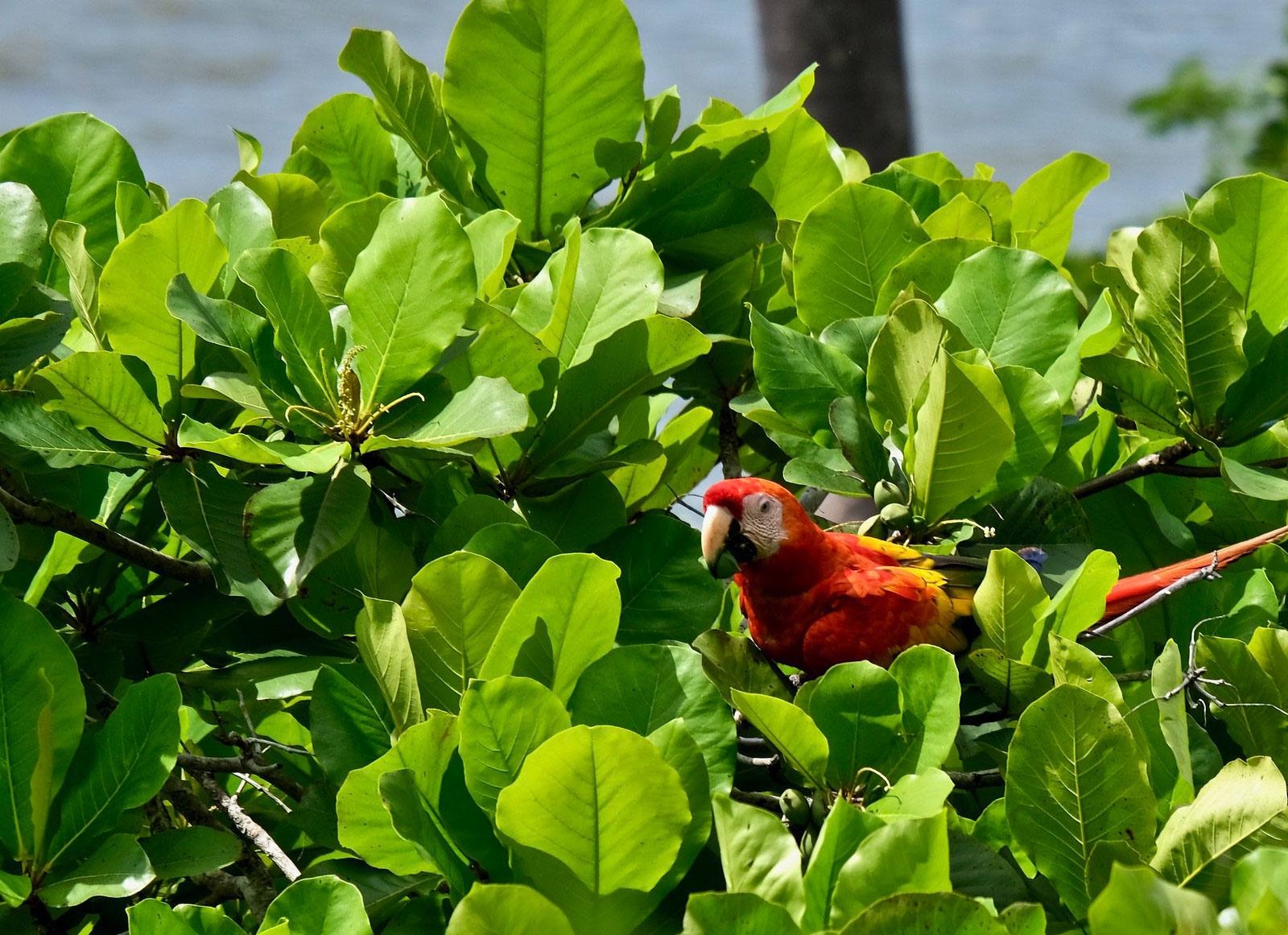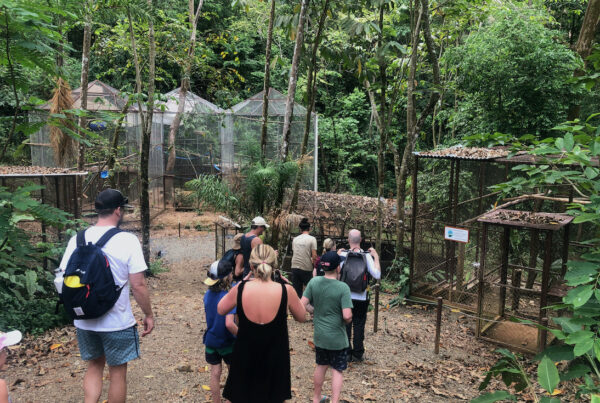There are 140 snake species in Costa Rica, and of those, 23 species are venomous, such as the eyelash pit viper (Bothriechis schlegelii) shown below. Some snakes live in tree tops, while others prefer rocks or ground cover, but they usually blend in amazingly well to their environment. This means it’s important to stay alert and look before you step, grab, sit, or lay down to make sure there aren’t any snakes hiding there! The venomous fer-de-lance (Bothrops asper shown above) has been encountered on the Casa Roja property. Its Spanish common name in Costa Rica is terciopelo, meaning “velvet” – but this isn’t a snake you want to touch! Full shoes that cover your toes and ankles are recommended at all times when walking or hiking, and knee-high rubber boots (which we provide) are required when walking the Casa Roja property or nearby jungle. Snakes have long teeth that some can use to inject venom to subdue their prey, but they will usually only strike to defend themselves, or as a last resort. They are not used to the presence of humans and prefer to be left alone.
To avoid snakebites:
It helps to know a little bit about snake appearance and behavior and practice developing a “search image” so that you can spot them more easily. Some species are active at night and others are active during the day, but they are found year-round and in all elevations and habitat types of Costa Rica, even in the Pacific ocean. Snakes are especially active when the weather is hot, but are more likely to be seeking shelter under objects and indoors during the wet season. Snakes bite when they feel threatened. Most of the snakebites occur on the feet or legs, when someone accidentally steps over these animals. Do not put your hands or feet directly inside hollow trees, caves, or under rocks or branches. Always try to be with someone else, so that if an accident occurs, the other person can come to your aid.
If you see a snake:
Maintain a wide distance from any snake because they can strike farther than you might think when coiled up like a spring. Under no circumstances should you attempt to move a snake, get close to it, or kill it; these are times when most snakebites occur. Our caretakers at Casa Roja are experienced in dealing with local snakes, so call them if you see one on the property. If you find a snake in your residence back away slowly and call the caretakers immediately!

If you are bitten:
Remain calm and take a picture of the snake if possible or remember its markings and color. Remove all clothing and jewelry on the affected limb and immobilize it if possible. Alert your guide or caretakers and they will assess the situation and begin evacuation for further medical treatment if necessary. Do not attempt any treatment for the bite yourself, such as sucking out the venom.
In the hospital, you will likely be treated with a snake anti-venom. Renowned Costa Rican scientist Clodomiro Picado Twight (1887-1944) pioneered research on snake venoms, and developed serums to treat snake bites. Currently, the Clodomiro Picado Institute (CPI) holds the best local expertise on snake bites and is responsible for the production of antivenoms for human and veterinary use in Central America, Ecuador, Nigeria and Papua New Guinea. Their website is a great source of snake information. There are two anti-venoms used for for Costa Rican snakes, one for the coral snakes, and one for all the other venomous snakes in the country. Although marine snakes are also venomous, there is currently no anti-venom for the marine snake. However, an encounter with one is unlikely, and a bite even less so, because their mouths are really tiny.For additional First Aid guidelines for snake bites, see these recommendations by the Clodomiro Picado Institute.








